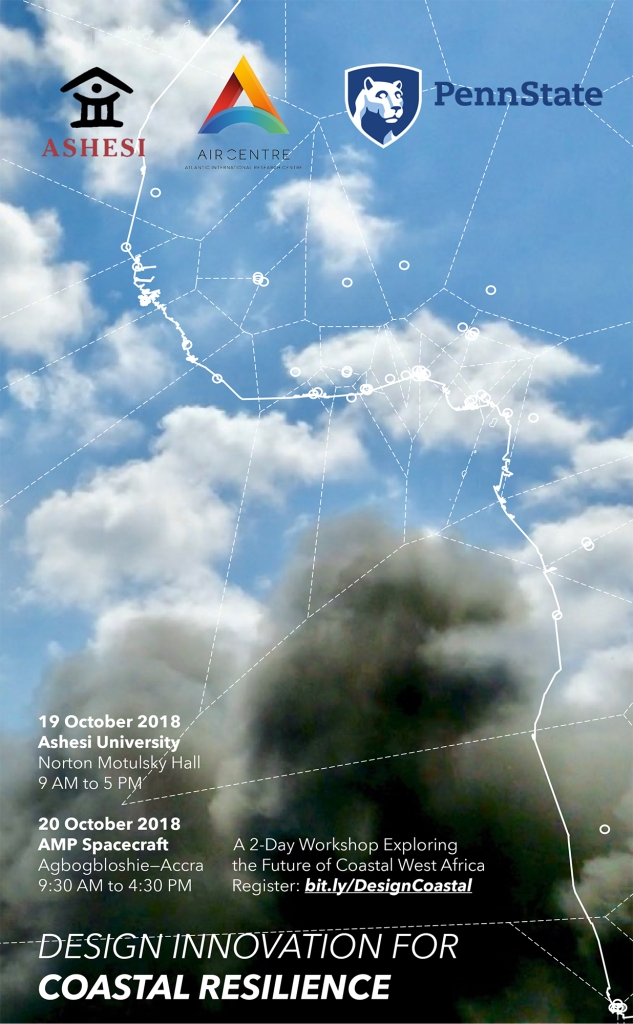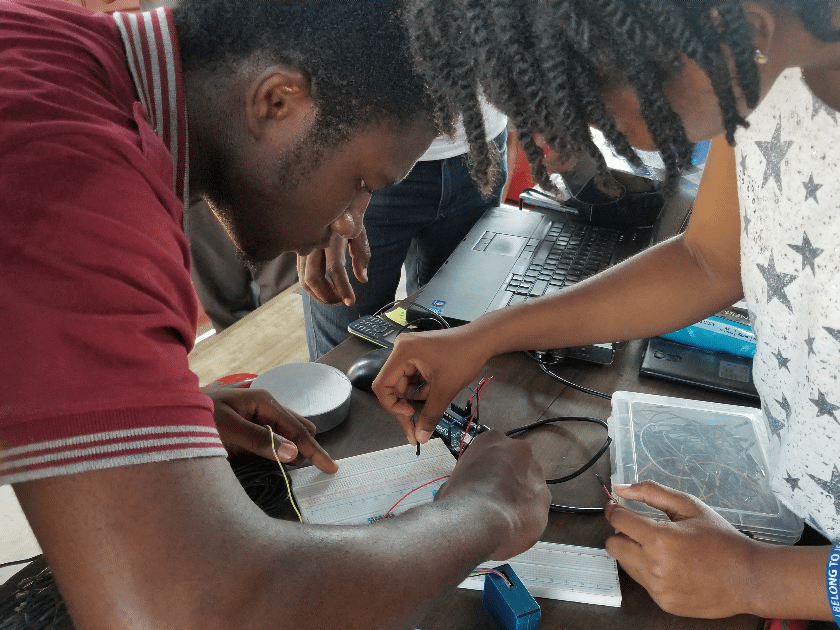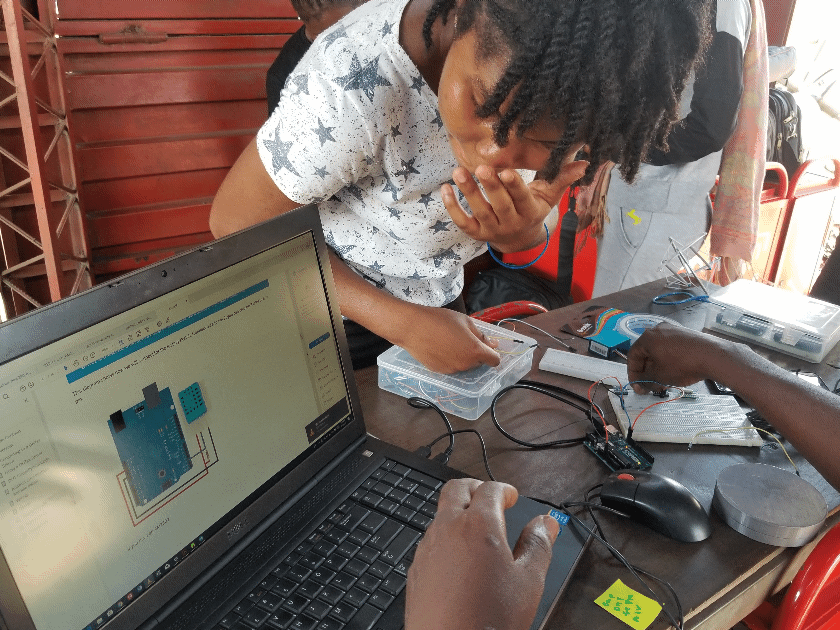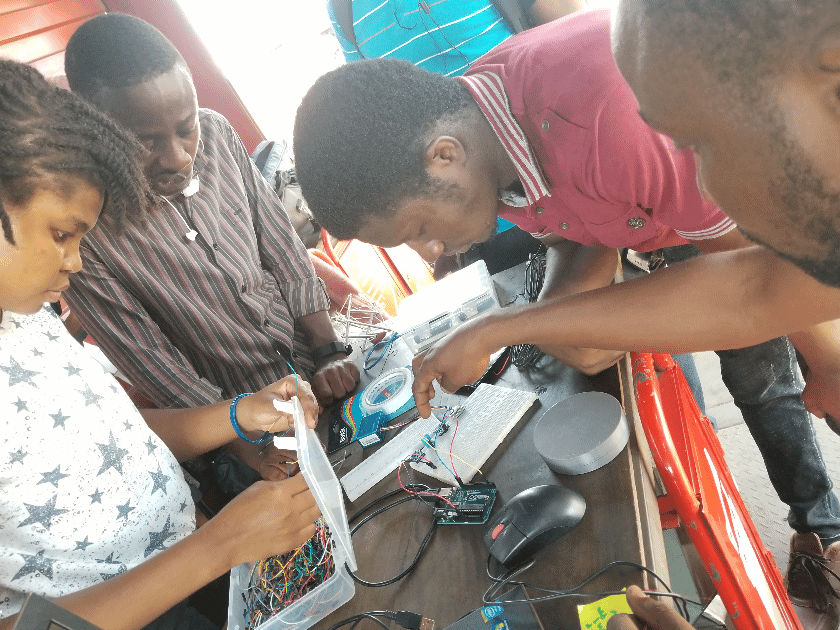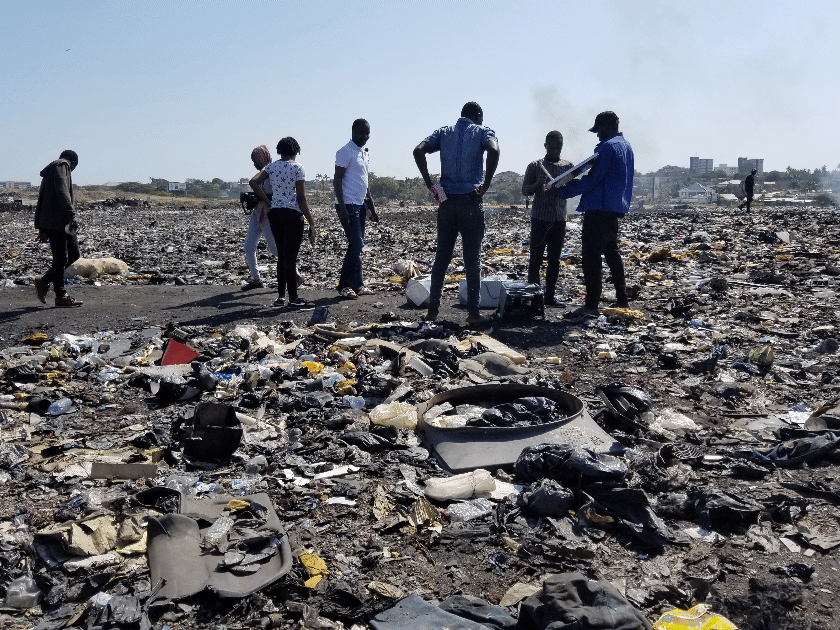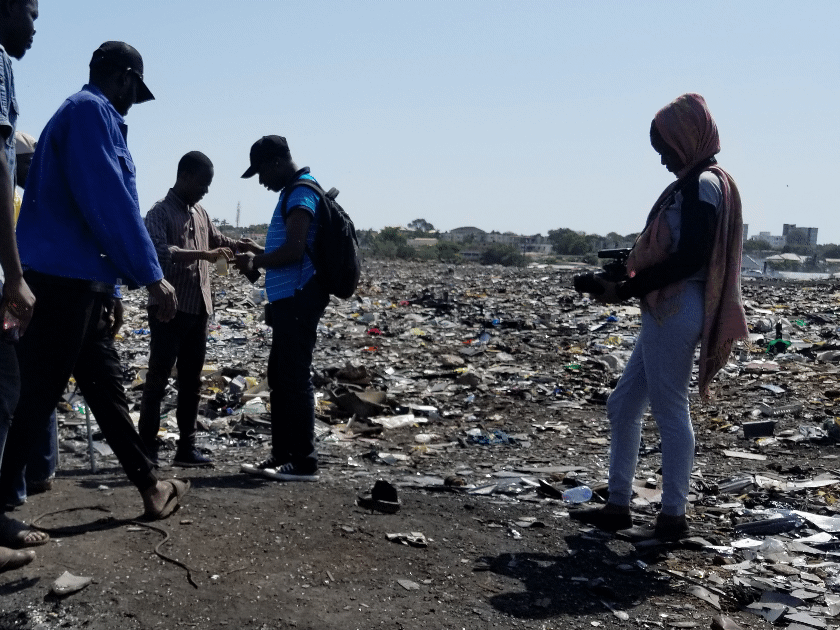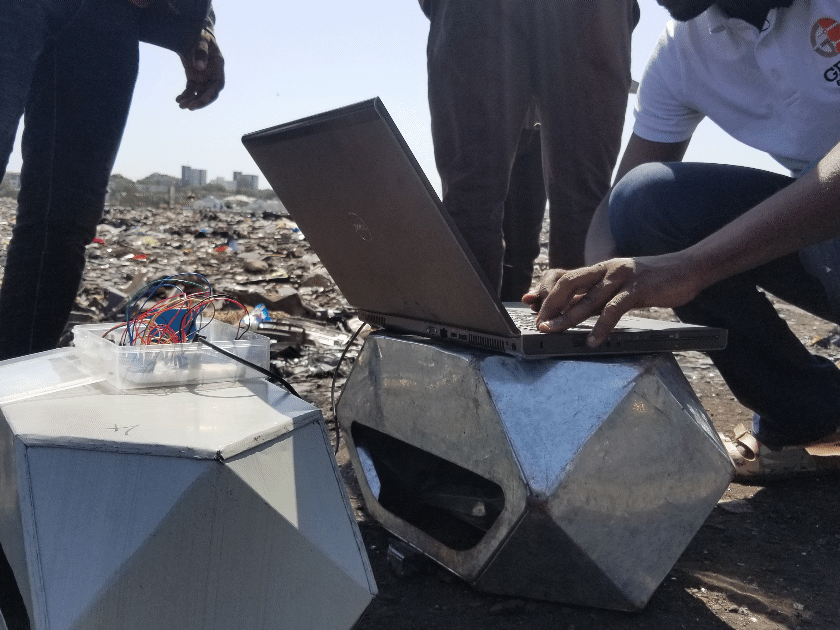Here are a few pictures from the first qamp, held yesterday under an “abrofo nkatie” (tropical almond) tree in Community 18, Tema. We discussed several projects that relate to teaching and learning about the environment in informal contexts.
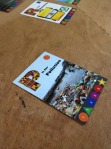





Rene Neblett, Founding Director of the Kokrobitey Institute presented the flash card-based curriculum on environmental education that she has developed as supplement to her initiative Ghana School Bags, which recycles billboards and other waste plastic materials into locally-made backpacks for school children in Ghana. “P is for pollution…..”
Dr. Victor Atiemo-Obeng, a chemical engineer who recently opened the Ghana office of Dow Chemical Company, where until recently he served at the rank of Dow Fellow, gave an introduction to the concept of turbidity – a measure of the number of particles suspended in a given fluid, an important aspect of water quality – and how to measure it. We took samples of water from various sources – but have to wait 48 hours to observe the results. He also explained the science behind bio-sand filters such as Hydraid, a low-cost water filter available locally in Ghana.
The science behind water quality is critical to understanding the e-waste ecosystem. Bio-sand water filters can eliminate pathogens such as bacteria, viruses and spores but not contaminates like heavy metals which can be found in e-waste dump sites like Agbogbloshie.
Hassan Salih gave an update on Accratopia (also a Facebook group), a collaboration of architects, artists, illustrators, photographers, poets and other creatives to explore the potentials of Accra’s urban future as utopia. What can a remade Agbogbloshie look like after its post-apocalyptic present?
